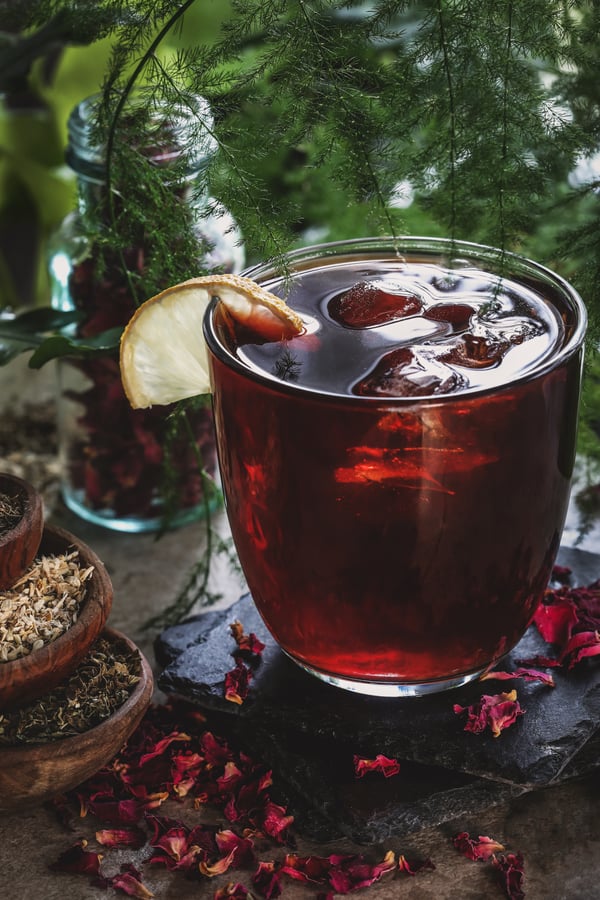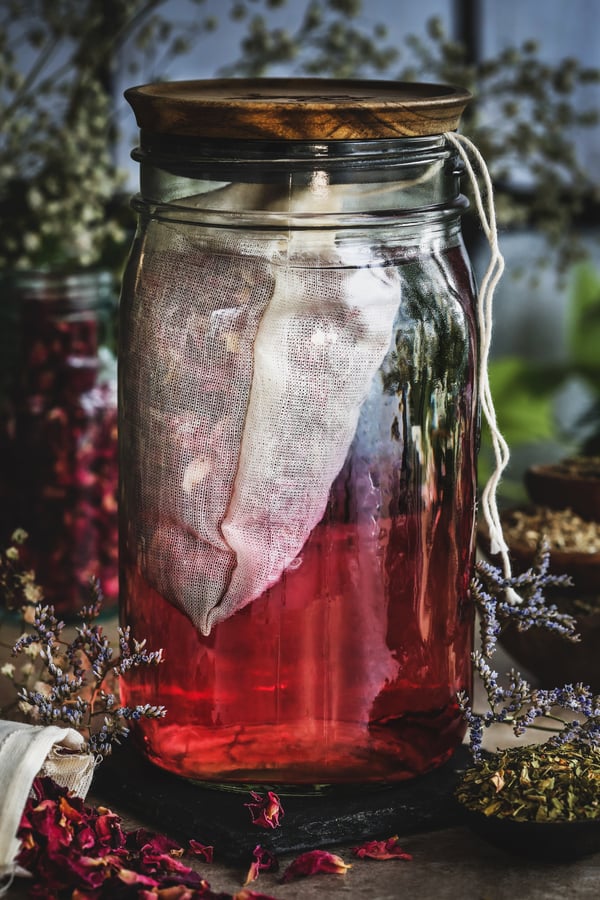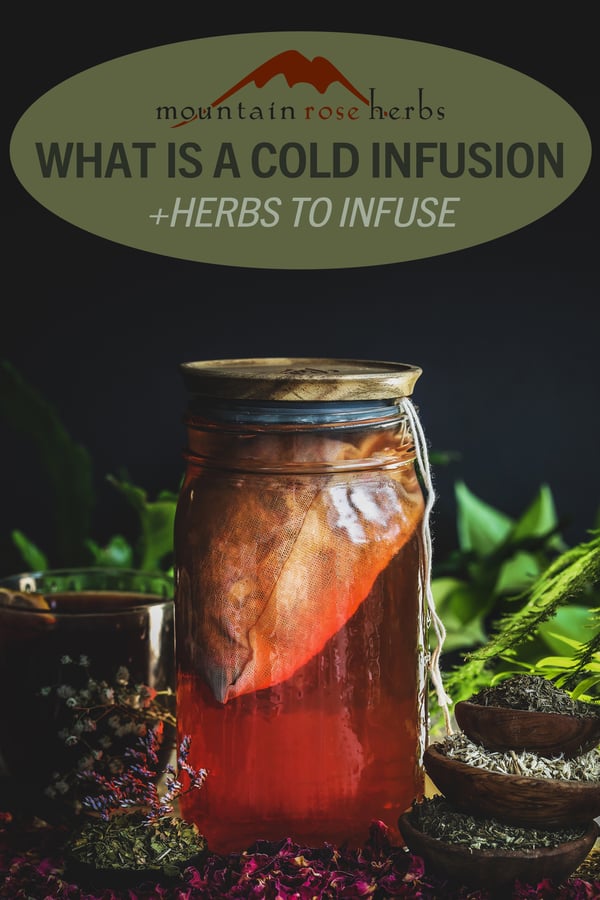Infusions are an enjoyable method for savoring and receiving the benefits of herbs. Also referred to simply as tea, an herbal infusion is technically called a tisane and involves steeping fresh or dried herbs in water for a period of time. The water used for an infusion can be hot or cold depending on the herbs you use and the effect you desire, as well as your preference and mood. In this blog, we are going to focus on what a cold infusion is, what herbs work best with this method, and how to make a cold infusion.
What Is a Cold Infusion
A cold infusion is a method for making a tisane using room temperature water rather than hot. There are several instances where a cold infusion might be preferred over a cup of steaming hot tea. Due to the gentle nature of the cold infusion method, it is ideal for aromatic plants whose volatile constituents would otherwise be damaged by heat. Additionally, some herbs contain plant constituents that are best extracted at room temperature to draw the most benefits out of the plant material. There are also plant constituents, such as bitter compounds, that you may not want in a cup of tea. These constituents aren’t readily dissolved by cool water, so can make for a more pleasurable brew. Lastly, you may want a cold infusion for sheer enjoyment. There’s nothing more fun or delicious than picking fresh herbs from the garden on a sunny day and letting them infuse in the natural warmth. It’s a summertime ritual at our house.
There are also some situations when a cold infusion is not ideal. Most plant roots, starchy plants, and mushrooms contain constituents that need hot water (and/or alcohol) to break down and become bioavailable. Cold infusions also have a short shelf life. Because there is no boiling involved, it is possible that bacteria can grow quickly. We suggest enjoying your infusion within a day or place it in the fridge and consume within two days. It is always advised to use your best judgment. If your cold infusion smells off or suddenly becomes cloudy, you may want to consider dumping it.
Best Herbs for Cold Infusions
Some favorite herbs to use in cold infusions include marshmallow, lemon balm, peppermint leaf, and rose buds. Marshmallow is a demulcent that contains mucopolysaccharides. This constituent is what makes marshmallow a gooey demulcent, and it is destroyed by heat. A cold infusion of marshmallow root is slightly sweet in flavor and has a viscous consistency, resulting in a tasty and good-for-you brew.
Aromatic plants also make for delicious and potent cold infusions. Their delicate volatile oils are preserved when slowly allowed to steep in room temperature water. These are my favorite plants to gather from the garden and use fresh. Suggestions include lemon balm, peppermint, rose petals, thyme, and chamomile.
How to Make a Cold Infusion
A cold infusion can be made using fresh or dried herbs.
Ingredients
- 5 - 8 tsp. organic herb(s)
- 4 cups water
Directions
- Place herb(s) of choice in a clean quart jar.
- Lightly wet herb(s) and let sit for 30 seconds.
- Fill jar to the top with the remaining water (approximately 4 cups).
- Secure the lid.
- Let infusion sit on the countertop for 2 – 10 hours, shaking occasionally.
Pro Tips
- Instead of placing herbs loosely in a jar, they can be added to a mesh tea ball or muslin cloth. Fill the mesh tea ball with herb and suspend at the top of the jar by draping the end of the chain over the side and loosely screwing the cap on. Physics dictates that as the constituents fall out of the plant material, they will drop to the bottom of the jar forcing water upwards into your suspended herb. This subtle circulation means extracting the most beneficial properties out of your herbs!
- Herbs can be gently infused on a countertop, in a sunny place (sun tea!), or in the fridge. All methods yield a similar result.
- Make sure all materials are clean before cold infusing so that you’re not accidentally introducing bacteria into your brew.
- Typically, you will need less dried herbs for an infusion (5 tsp.). If using fresh herbs, you may need more (8 tsp.) since the plant isn’t concentrated from the drying process.
- Experiment with infusion times, herb amounts, and herbal combinations to create a delicious and potent brew that works best for you!
Want to Learn More About Brewing the Perfect Cup?
Read Our Guide to Brewing Tea
You may also be interested in:
How to Make Instant Herbal Tea Cubes
Nourishing Herbal Infusion Recipe – A Tea With Purpose
Marshmallow Root & Leaf: Where Fluffy Food Meets Soothing Remedy













